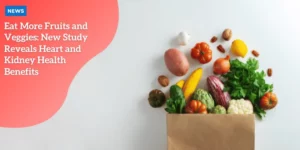Almost half of U.S. counties lack even one cardiologist

Introduction
A significant healthcare disparity is emerging across the United States as nearly half of its counties lack access to even a single cardiologist.
Anúncios
This shortage is particularly acute in rural areas, where healthcare access has always been a challenge, but now, with the increasing rates of heart disease, it poses an even more critical issue.
The absence of cardiologists in these regions means that millions of Americans are left without the necessary care to combat heart disease and related conditions, putting their health at great risk.
New research has recently shed light on the extent of this issue, providing alarming statistics and highlighting the profound implications for public health across the nation.
Anúncios
The Extent of the Problem
According to recent findings published in the Journal of the American College of Cardiology, nearly 46.3% of all counties in the United States are now considered “cardiology deserts,” meaning they have no cardiologists practicing in those areas.
This is a staggering statistic, as it reveals that approximately 22 million people live in these so-called deserts, facing a significant barrier when it comes to accessing specialized heart care.
For individuals in these areas, even basic consultations with a cardiologist require traveling an average of 90 miles round trip.
Anúncios
The geographical isolation of these areas, coupled with the scarcity of healthcare providers, is making it increasingly difficult for these communities to receive timely and life-saving heart care.
Geographic Disparities and Demographics
The vast majority of these cardiology deserts are located in rural counties, which are already disadvantaged in terms of healthcare access.
These regions typically have lower income levels, limited access to healthy food options, and a shortage of healthcare providers overall.
The lack of cardiologists only compounds these existing challenges, making it even harder for residents to manage their health effectively.
Rural populations tend to face more significant health challenges due to factors such as higher rates of smoking, obesity, and physical inactivity, which in turn increase the risk of developing cardiovascular diseases.
For many rural residents, managing complex medical conditions, such as heart disease, is difficult without access to specialized care.
Cardiologists are trained to diagnose and treat heart conditions that require advanced expertise, and without them, individuals in rural areas are often left to rely on general practitioners, who may lack the necessary training to provide specialized care.
In areas where medical resources are already stretched thin, the absence of cardiologists makes it even harder for residents to receive appropriate care.
Impact on Health Outcomes
Despite heart disease being the leading cause of death nationwide, individuals in rural areas are disproportionately affected by cardiovascular conditions.
The Centers for Disease Control and Prevention (CDC) report that preventable deaths due to heart disease are more prevalent in these regions.
This highlights a stark reality: rural residents not only face a higher risk of developing heart disease but also have limited access to the care that could help prevent these conditions from worsening.
The absence of cardiologists in rural counties contributes directly to these disparities, as patients are forced to delay treatment or forego care altogether due to the logistical challenges of traveling long distances to access specialized services.
Moreover, the lack of immediate access to cardiology care can result in worse health outcomes over time.
Individuals with heart disease often require regular monitoring, specialized tests, and treatments to manage their condition effectively.
Without these services, their conditions can deteriorate, leading to more serious complications such as heart attacks, strokes, and even death.
The growing cardiovascular crisis in rural America underscores the need for urgent action to address this healthcare gap and ensure that heart care is available to those who need it most.
Insights from the Research
Dr. Warraich’s study, conducted in collaboration with GoodRx, provides a sobering look at the state of cardiology care in the United States.
His research reveals that in counties with cardiologists, there is an average of 24 specialists serving the population.
However, the distribution of these specialists is far from uniform.
In fact, 10% of counties have only one cardiologist serving the entire population.
This scarcity of cardiologists not only limits immediate access to care but also exacerbates existing health disparities, particularly in underserved regions where medical resources are already limited.
This scarcity of cardiologists presents a major challenge in terms of both access and equity.
While urban areas may have an abundance of healthcare providers, rural areas are left to grapple with the consequences of this shortage.
he research clearly shows that this issue is not only about the lack of specialists but also about the broader issue of healthcare inequality, where people in rural and underserved areas are left at a distinct disadvantage when it comes to receiving adequate medical care.
Personal Perspectives and Case Studies
One of the most poignant examples of the impact of living in a cardiology desert comes from Dr. Warraich’s personal experience in Randolph County, North Carolina.
Prior to relocating to Boston in 2019, he was the sole practicing cardiologist for a population exceeding 146,000 people.
This experience provided him with firsthand insight into the immense pressure placed on healthcare resources in underserved regions.
Dr. Warraich’s work in Randolph County was an eye-opening example of how difficult it can be for patients in rural areas to receive the care they need.
With only one cardiologist available for such a large population, the strain on healthcare resources was immense, and patients had to wait weeks or even months for an appointment.
The limited availability of cardiology services also meant that patients often had to travel long distances to seek care.
This is not just a logistical inconvenience—it can be a matter of life and death.
For individuals with heart disease, timely intervention is crucial, and delays in accessing care can lead to serious complications.
Dr. Warraich’s experience highlights the challenges faced by both healthcare providers and patients in rural areas, where the scarcity of specialized care exacerbates existing health disparities.
Addressing the Challenge: Solutions and Innovations
In response to these challenges, healthcare providers are exploring innovative solutions to bridge the gap and improve access to specialized care in underserved regions.
Telemedicine, for example, has emerged as a promising solution to connect patients in remote areas with cardiologists who can provide consultations and monitor their health remotely.
This technology has the potential to reduce the need for patients to travel long distances for care, thereby improving access to heart care services.
Providers like Dr. Wagener and his team at Avera Health have embraced telemedicine as a way to expand access to cardiology services across a wide geographic area.
Avera Health covers 86 counties across multiple states, providing remote consultations to patients who would otherwise have no access to specialized care.
This model has proven to be effective in addressing some of the challenges posed by cardiology deserts, allowing patients to receive timely care and avoid the burden of long-distance travel.
In addition to telemedicine, initiatives are underway to incentivize cardiologists to practice in underserved areas.
Programs such as loan forgiveness for medical professionals who work in rural areas and investments in telehealth infrastructure are helping to address the shortage of cardiologists in these regions.
These efforts aim to not only reduce the strain on healthcare providers but also ensure that patients in rural areas can receive the care they need without having to travel long distances.
Policy and Advocacy Efforts
Advocacy groups and policymakers are also pushing for policy reforms to address the healthcare disparities in cardiology.
Some proposals include increasing funding for medical residency programs in rural areas, expanding Medicaid reimbursement rates for telemedicine services, and promoting partnerships between academic institutions and community healthcare providers.
These reforms are essential for ensuring that cardiology services are available to all Americans, regardless of where they live.
Moreover, policymakers are advocating for greater investments in healthcare infrastructure in rural areas, including improvements to broadband access, which is crucial for telehealth services.
By addressing these underlying issues, policymakers hope to create a more equitable healthcare system that ensures all Americans have access to the care they need to manage their heart health.
Collaborative Strategies for Long-Term Impact
The key to overcoming the challenges of cardiology deserts lies in collaboration between healthcare systems, academic institutions, and local communities.
By leveraging shared resources and expertise, stakeholders can implement holistic approaches that integrate preventive care, patient education, and early intervention strategies.
Working together, these groups can develop sustainable solutions that address the root causes of healthcare disparities and ensure that individuals in underserved areas receive the care they need to stay healthy.
Looking Forward: Towards a Sustainable Future
Dr. Steve Ommen from the Mayo Clinic emphasizes that addressing healthcare disparities in cardiology requires more than just improving access to care—it requires a comprehensive, multifaceted approach that includes telemedicine, community outreach, and policy interventions aimed at enhancing healthcare infrastructure in underserved areas.
Collaborative efforts between healthcare systems, academic institutions, and community organizations will be essential in implementing these strategies effectively.
By fostering partnerships and leveraging technological advancements, such as artificial intelligence for remote diagnostics and patient monitoring, healthcare providers can ensure long-term sustainability in addressing cardiology deserts and improving cardiovascular outcomes across diverse populations.
This approach will help create a healthcare system that is more inclusive and better equipped to meet the needs of all Americans, regardless of their location.
Conclusion
The shortage of cardiologists in nearly half of U.S. counties presents a formidable challenge to public health, particularly for those at risk of cardiovascular diseases.
As research continues to illuminate the scope of this issue, it becomes clear that efforts must intensify to develop sustainable solutions that ensure equitable access to life-saving heart care across all communities.
By addressing these disparities proactively, healthcare providers and policymakers can mitigate the adverse impacts of cardiology deserts and pave the way for healthier futures nationwide.
It is imperative that ongoing collaboration and innovative approaches be prioritized to close these gaps and improve overall cardiac health outcomes in underserved areas.
Through continued efforts and partnerships, it is possible to create a future where heart care is accessible to all, regardless of where they live.





